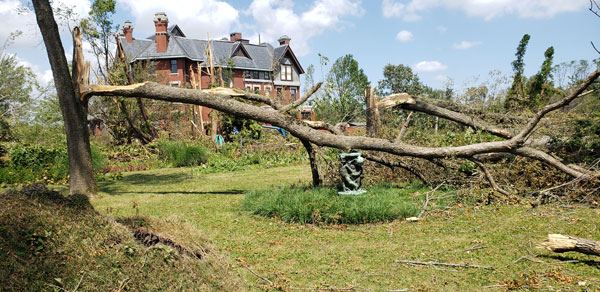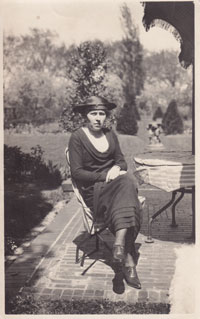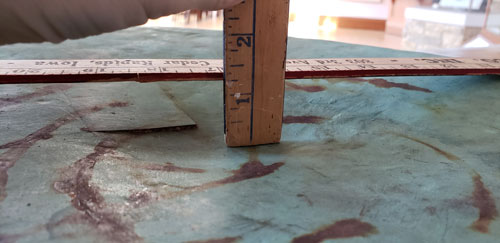An essential part of the Brucemore collection is the statuary scattered outdoors across the estate’s 26 acre cultural landscape. As the second family to call Brucemore home, the Douglases, expanded the grounds and added buildings and landscape features, they also selected and incorporated pieces of statuary to accentuate the beauty of the estate.
The derecho storm that devastated Cedar Rapids on August 10, 2020 most visibly caused damage to the tree canopy and buildings at Brucemore, but also significantly impacted the outdoor statuary. Following the storm, staff assessed the damage to these irreplaceable pieces and several pieces were moved into alternate locations or storage until they can be conserved.

“We use the phrase ‘outdoor statuary’ to encompass a variety of objects on the grounds, including everything from the statues to the plaques in the pet cemetery,” said Museum Program Manager Melissa Porter. “These objects include one-of-a-kind pieces – the historic artwork, gates, and structures specific to Brucemore.”
During the storm, several outdoor pieces were hit by tree debris, including multiple sculptures and the metal gates at the Linden Drive and First Avenue entrances. Other pieces not directly damaged by the derecho were exposed to new risks.

“While cleaning debris from the estate, we have had to be especially careful as vehicles have needed to drive off paved surfaces, and many pieces were hidden amongst the debris,” said Porter. Where possible, statuary was carefully moved indoors. Pieces that could not be moved were protected in other ways. For instance, large crates were custom made to protect the 1927 pond urns which were surrounded by broken and fallen trees.
One piece damaged in the storm that is especially significant to Brucemore is Dancing Children. Irene Douglas, who lived at Brucemore from 1906-1937, commissioned Bashka Paeff to create the sculpture. The Cedar Rapids Republican published that Ms. Paeff spent multiple weeks at Brucemore. She also instructed Irene’s oldest daughter, Margaret, on sculpting. During the derecho, a tree landed on top of the signed work and dented it. The work of art was carefully moved to a safe indoor location to allow the fallen tree to be removed.

“After we took initial steps to protect the statuary, we reached out to a conservator to perform an assement and create a treatment plan,” said Porter. “The Minnesota-based conservator had hoped to visit Cedar Rapids to do the assessment in person, but a spike in COVID-19 cases required staff to adapt, using video chat, detailed photographs, and measurements to allow the consverator to develop a plan of action.”
Staff are working on gathering asssesments and estimates for conservation of these pieces, as well as working with insurance and other emergency funding to determine what may be covered. Conservation efforts ultimately will be dependent on funding, and are expected to take several months. A small silver lining resulting from the distater is the opportunity to closely examine these unique works that help define Brucemore’s landscape. Porter said, “The closer you look at any piece of art, the more you can appreciate it.”
Preserving and interpreting the outdoor statuary today provides a connection to the people who previously lived at Brucemore. These pieces reflect their tastes and reveal their personal stories. Conserving them and returning them to the landscape is an integral component of the recovery process.